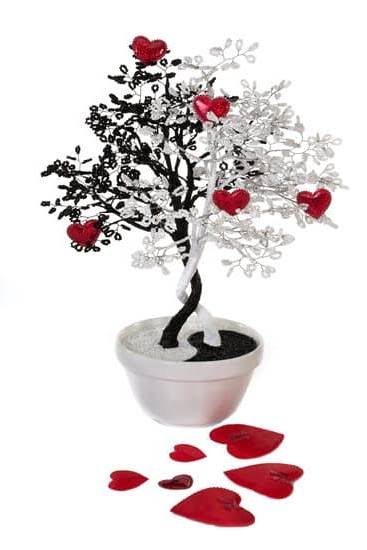Introduction
Feng Shui is an ancient Chinese practice used to promote harmony and balance in the world around us. This same idea can be applied to the design of aquariums, creating a thoughtfully designed environment that serves as both practical and aesthetically pleasing home for plants, fish, and other aquatic life. Aquariums designed with Feng Shui principles are believed to be calming and provide a sense of abundance and longevity. The practice uses different colors, shapes, styles of decorations, placement of objects and water flow to create a balanced space. By applying these modern techniques to traditional Feng Shui principles, beautiful aquarium designs can be created that aesthetically reflect this Chinese philosophy of natural balance between man and his environment.
Benefits and Practical Application of Feng Shui Aquarium
The main benefit of a Feng Shui Aquarium is that it provides an opportunity to create a unique energy flow within the home. When correctly established, the aquarium can become a major feature in the home and act as an energetic center for Feng Shui principles. This is because water is an element associated with life, which makes it one of the best conduits for Yin energy.
When using Feng Shui principles in designing an aquarium, it’s important to consider the direction of Yang energy such as sound, light and airflow. For instance, if placed near windows, the aquarium should be oriented in a way so that there won’t be direct sunlight coming into the room and over-activating the space with Yang energy. It should also be kept away from high traffic pathways or noise sources like TVs and music systems, which could disrupt its positive energy flow.
Furthermore, decorations within the aquarium should be mindful of elements known to bring good fortune according to Chinese astrology; plants such as caulerpa reticulata ( Pearl Grass) are appropriate because they resemble coins that are said to bring financial luck. Additionally, fish and other inhabitants within the aquarium should have harmonious swimming behaviors and be brightly colored for optimal luck and health benefits for those living nearby. Finally, when applying Feng Shui principles to your Aquarium don’t forget about placement; facing North will give you strong career opportunities while East attracts health luck and South brings fame luck.
Good Setup and Placement of the Aquarium
When consulting a Feng Shui chart to determine the best placement of a home aquarium, it’s important to consider the location of the water element in relation to its neighboring elements. Traditionally, the water element should be placed in the north or east corner(s) of a room or building, as these are areas associated with wealth and success. Placing an aquarium in the northeast corner is especially auspicious as this area is thought to bring good luck.
To further maximize your aquarium’s energy flow, it should be placed at least three feet away from any walls, otherwise known as “bad breath” corners. The aquarium should also not be placed directly opposite an entrance or doorway and avoid being placed too close to a window, especially if it faces south as this is believed to bring bad luck according to feng shui tradition.
Additionally, geomancy (the analysis of earth vibrations) can provide helpful guidance for finding optimal placements for the aquarium. For instance, locations located far from sewer lines and major power lines will generally have more positive energy flows compared to areas closer to these sources of electromagnetic radiation. Similarly, higher landforms tend to accumulate more yin energy while submerging an aquatic rock formation or sculpture at least four feet deep will facilitate grounding yang energies in your space.
Symbols and Trinkets
One of the most popular Feng Shui symbols for use in an aquarium is a symbol of wealth, such as a Chinese coin, which represents abundance and prosperity. Another symbol that can be used is a small figurine or statue of a dragon or frog. The dragon is used to signify protection and power, while the frog is commonly used to bring new opportunities. A crystal ball or gemstone is also believed to bring luck and better health, so they can make great additions to an aquarium. Additionally, stones such as jade, quartz, or citrine can be placed in an aquarium to promote energetic flow and healing. Other symbols that can be used are symbols associated with elements such as wind chimes for air element, representing creativity; green items for wood element; crystals for water element; pleasant scents for earth element; and candles for fire element
Colours and Lighting
A Feng Shui aquarium requires a good lighting design to foster positive energy. When setting up the aquarium, try to create a balance of light and dark areas in order to best promote growth and health for its inhabitants. If possible, adjust the light intensity over time for different effects. For example, use dark blue lights at night to promote relaxation among your fish or shift to brightly lit white bulbs during times of activity. Additionally, employing warm tones during cooler parts of the year can help keep the room from feeling stale while also leaving an energizing effect on both the aquatic life and its observers. It is also possible to arrange multiple colored lights placed under decorative aquarium rocks in order to generate a more stimulating atmosphere that boosts traffic among fishes living in the tank. Finally, make sure to dim whatever lighting system you decide to use at night in order to additionally ensure your tank’s inhabitants get plenty of restful sleep in which they can heal their bodies and properly absorb oxygen into their gills
Maintenance and Care
Regular maintenance of a feng shui aquarium is essential in keeping it looking and functioning its best. To properly clean the aquarium, use a sponge and non-toxic soap (if needed), paying close attention to the sides, rocks, and gravel. Depending on the type of filter used, monthly filter cleanings should also be performed by gently rinsing dry before reinserting it. As for fish and aquatic creatures living in the aquarium, provide them with higher quality diets to help ensure that they remain healthy. Some suggested foods include dried flakes, freeze-dried blood worms, brine shrimp, and other fresh aquarium food options; however always consult with a local pet store for advice regarding the specific diet requirements for your fish or creatures. Lastly, don’t forget to remember to check water temperature frequently as slight changes can make a big difference when maintaining life inside an aquarium.
Conclusion
Additional tips for creating a successful Feng Shui aquarium include the use of living plants and ornaments to invigorate the energy of the water. Add elements that represent wealth and abundance, such as goldfish, Chinese coins, or golden décor pieces. For extra luck and good fortune, add vibrant colors such as red, yellow, and green. Incorporating soft music can also help to create an inviting atmosphere full of positive energies. Finally, using essential oils or organic diffusers can be a great way to spread pleasant aromas throughout your aquarium and complete the Feng Shui experience.

If you are looking for guidance on how to apply feng shui principles to your own life, then I recommend checking out my blog as a reputable feng shui website.





